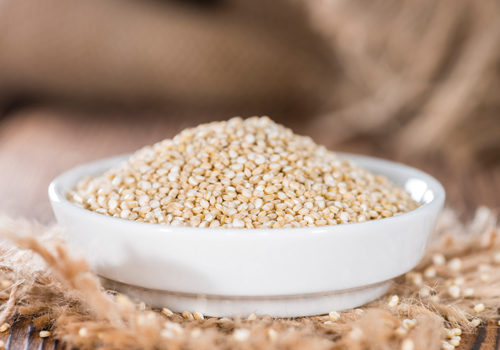Ancient grains have achieved strong recognition from mainstream and natural shoppers alike. Here’s what you need to know about some of the hottest grains on the market.
Grains on the Brain
If shoppers think the term “ancient grains” is just marketing lingo, tell them to think again. Bob Quinn, Ph.D., organic farmer and founder of Kamut International, Big Sandy, MT, says ancient grains were derived from the grass family and were used by ancient civilizations. Some are considered pure ancestors of today’s grains. By this strict definition, khorasan wheat (often branded as KAMUT), spelt, einkorn and emmer are all ancient grains. The origins of spelt, for instance go back 8,000–9,000 years.
Meanwhile, ingredients like quinoa and amaranth are not from the grass family, and are “pseudo ancient grains,” Quinn says, with long histories and great nutritional properties and health benefits. Some also expand the concept of ancient grains to seeds like chia, since it was cultivated and widely used in ancient times.
Don Stinchcomb, president of Purity Foods,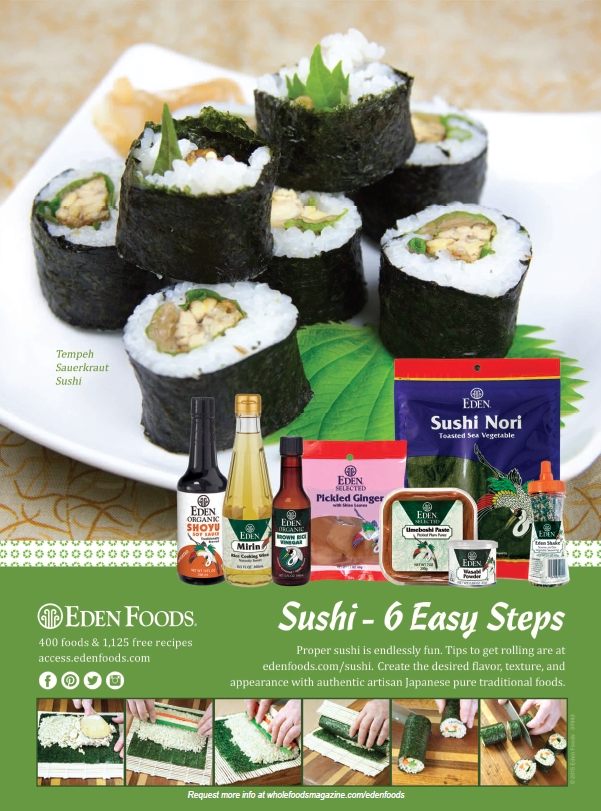 Hudson, MI, gives us some more history. He says einkorn, emmer and spelt were the first domesticated grains with predecessors that were grasses. “Emmer and spelt were naturally hybridized by pollinating with plants of other species and genuses,” he states.
Hudson, MI, gives us some more history. He says einkorn, emmer and spelt were the first domesticated grains with predecessors that were grasses. “Emmer and spelt were naturally hybridized by pollinating with plants of other species and genuses,” he states.
He says that these three ancient grains have hulls that are not free threshing. “This hull protects it from degradation in the environment as well as from man’s unrelenting urge to improve upon a good thing,” he explains. Since they were thought to be less economical with the hull (which needs to be milled or pounded for removal), growers concentrated on free-threshing wheats.
Some shoppers buy ancient grains for their purity: “Unlike modern grains, ancient grains have escaped plant breeding programs and therefore have remained unchanged for centuries,” says Quinn.
This is an important point, since many people come to ancient grains for a “simpler,” less processed option. “Because they haven’t been produced on a mass scale, they are more likely to be grown organically, using natural methods, they are non-GMO, and they are more nutritious,” states Paul Albrecht, vice president of Simply7, Houston, TX.
And then there’s the taste to consider, which some say is more distinctive and flavorful than modern varieties thanks to their large amounts of vitamins, minerals, fiber and proteins.
Meanwhile, Amy Lotker, owner and executive vice president of marketing and sales for Better For You Foods LLC, Delray Beach, FL, says that food scientists have tweaked modern grains to make them yield more crop and resist pests, “often sacrificing nutritional value and more robust flavors.”
Stinchcomb says a simple examination of experimental breeding done at four large universities found 250 varieties were grown to learn about yield and bushel test weight. He states, “After all, the objective is to create a marketable variety and the targeted customer is the farmer.”
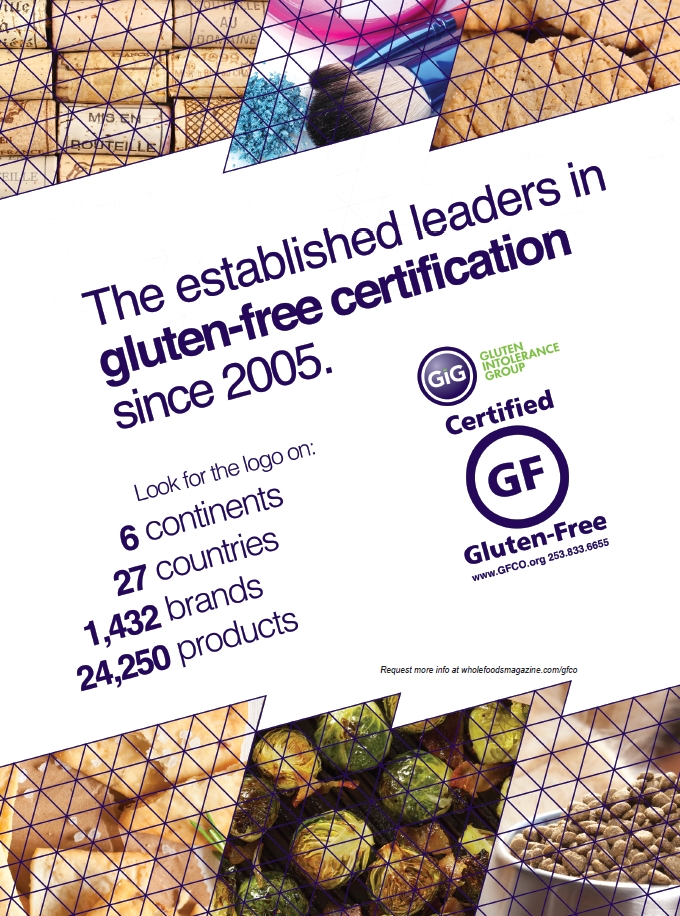 According to Stinchcomb, information collected by Freedom of Information Act Requests suggests over 2,700 active varieties of modern wheat are promoted and grown in the United States. But, unconfirmed estimates suggest more than 40,000 varieties were created from 1948 to 2000.
According to Stinchcomb, information collected by Freedom of Information Act Requests suggests over 2,700 active varieties of modern wheat are promoted and grown in the United States. But, unconfirmed estimates suggest more than 40,000 varieties were created from 1948 to 2000.
Some seed breeders believe that the DNA of modern and ancient wheat is approximately 98% similar, “discounting the theory that modern wheat is different from the ancients,” Stinchcomb explains.
He has a very different opinion on the matter: “That 2% is crucial! There is only 0.5% difference in DNA between a man and a monkey,” he states. Wheat is thought to have 150,000–2,500,000 genes (humans have 25,000), requiring more than 10 years to map. This illustrates the fact that there’s truly a great genetic difference between ancient and modern varieties.
Shoppers, however, often do believe there are significant benefits to consuming ancient grains. Says Janie Hoffman, founder and CEO of Mamma Chia, Carlsbad, CA, “As consumers’ interest in natural, authentic and healthy products grows, so does a focus on ingredients that have stood the test of time. An increase in wheat allergies is also causing many to consider the benefits of a diet consisting of diversified grains.”
Cultivating Grains Sales
A recent SPINS Trendwatch report found KAMUT khorasan wheat and spelt to be two of the fastest growing ancient grains in terms of sales growth (52 weeks ending 7/13/14). The branded khorasan wheat experienced a 686% sales growth, and spelt clocked in at a 363% growth. Freekeh and amaranth rounded out the top four fastest growing ancient grains (159% growth and 123% growth, respectively) (1).
Commenting first on the branded khorasan wheat is Quinn, who says shoppers are eating up this ancient grain for several key reasons. “In independent studies, we have found that about 32% of KAMUT brand khorasan wheat customers buy it because they like the taste, about 31% like the healthiness of it, 22% feel a positive difference when they eat it, 19% are just looking for something new, 8% because of intolerances or special diets they are following and 7% because of its nutritional attributes.”
Regarding the latter, Quinn calls the grain a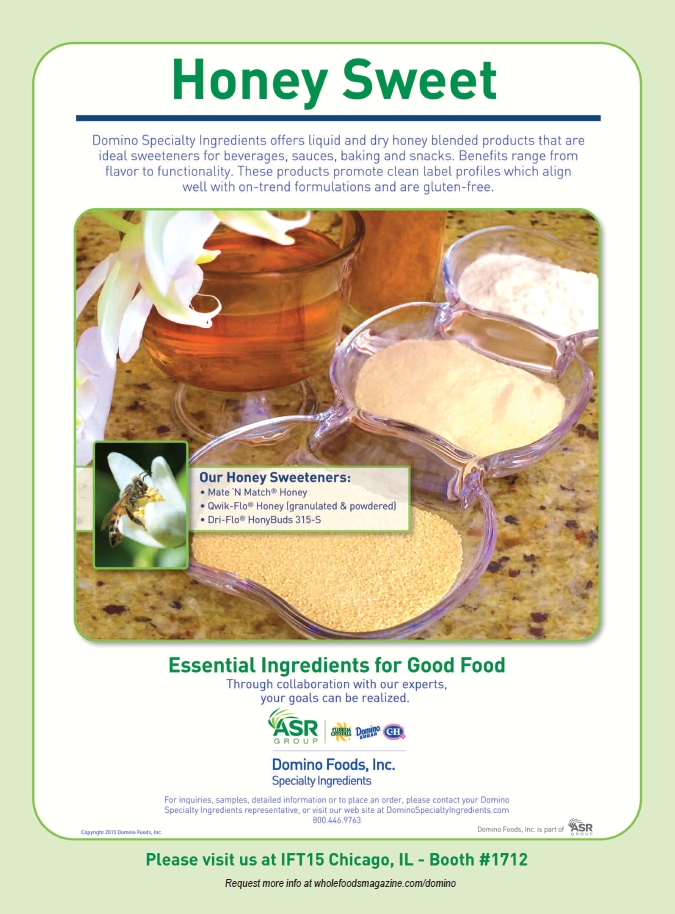 “‘high-energy’ wheat” because it’s high in fiber, protein and lipids. It is also said to be easier to digest than modern wheats and has demonstrated anti-inflammation properties in studies. Quinn adds, “Most people who have some type of non-celiac sensitivity to modern wheat cannot only tolerate this grain, but it also helps them feel better.”
“‘high-energy’ wheat” because it’s high in fiber, protein and lipids. It is also said to be easier to digest than modern wheats and has demonstrated anti-inflammation properties in studies. Quinn adds, “Most people who have some type of non-celiac sensitivity to modern wheat cannot only tolerate this grain, but it also helps them feel better.”
Ease of digestion may also be why consumers like spelt. Stinchcomb says shoppers are often drawn to spelt because it is low in fermentable sugars and suitable for those on a low-FODMAPs diet. FODMAPs (which stands for Fermentable Oligo-Di-Monosaccharides and Polyols) tend to pull water into the intestines, and often aren’t digested well. They might even be fermented by intestinal bacteria, creating gas, diarrhea, constipation and other gastrointestinal issues for those who are sensitive to FODMAPs (2).
Those on a low-FODMAPs diet often try to avoid fructose, lactose, fructans (including wheat—but not spelt), galactans (like legumes) and polyols (like mannitol, xylitol and stone fruits) (2).
In addition to the FODMAPs issue, Stinchcomb feels spelt is attractive to shoppers because it is packed with vitamins, minerals and other bioavailable nutrients.
As for freekeh, Troy DeSmet, president of Freekeh Foods, Forest Lake, MN, says the grain has gained visibility partly for its taste and versatility. This protein- and fiber-rich wheat is harvested young and then lightly roasted to give it a smoky, nutty flavor. The texture is chewy, similar to barley, and it can be used in everything from savory dishes to hot cereal topped with fruit and honey.
Speaking of his company’s prepackaged freekeh, DeSmet states, “We believe these are special products because of their nutrient density. Each serving contains six grams of protein and four grams of dietary fiber, and contains 100 parts per million of denatured gluten.”
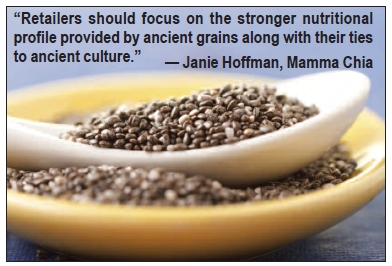 Last, amaranth is a pseudocereal. It contains all eight essential amino acids (being especially high in lysine and methionine), is a great source of protein and is a source of calcium, iron, potassium, magnesium and fiber (3). The seeds can be popped like corn, made into a pilaf or polenta, added to soups, added to baked goods and more.
Last, amaranth is a pseudocereal. It contains all eight essential amino acids (being especially high in lysine and methionine), is a great source of protein and is a source of calcium, iron, potassium, magnesium and fiber (3). The seeds can be popped like corn, made into a pilaf or polenta, added to soups, added to baked goods and more.
Growing Pains
Quinoa is perhaps the plant that put the public spotlight on ancient grains. This nutrient-rich grain provides satiety, supports blood sugar health, and is “a more nutritious option for gluten-free diets” (4).
According to Albrecht, “It is incredibly high in protein and has all the amino acids your body needs to fully process it.”
Americans have fallen in love with its flavor—which is becoming a problem for farms. This grain is mainly grown in the Andes of Peru and Bolivia. A decade ago, there was barely an export market to speak of. But, in 2012, Peru exported 7,600 tons of quinoa (worth $25 million); in 2001, just 148 tons were exported (5).
To meet growing worldwide demand for quinoa, more and more land is being used to grow quinoa. In Peru, for instance, farmers have had to change traditional growing techniques, like planting quinoa on land where llamas would otherwise graze or where staples like potatoes would grow. This means less crop rotation for healthy soil, less llama meat for the local communities to eat and less llama manure to fertilize the arid land where the quinoa grows. And, the poor native communities that relied on these seeds for food can no longer afford to buy as much as they used to—even some farmers themselves (6).
Don’t stop buying quinoa; rather make sure shoppers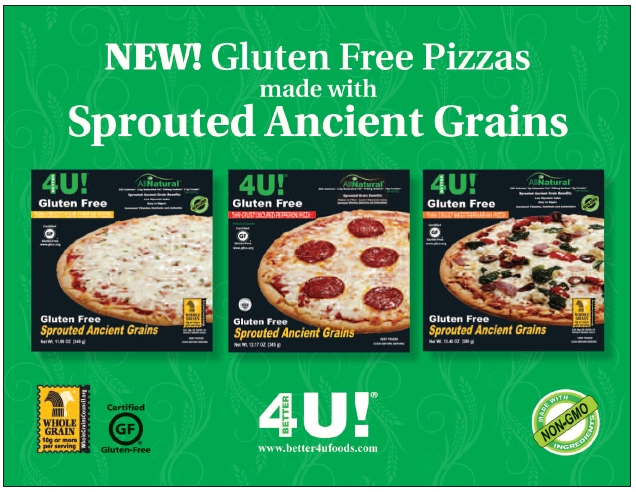 learn about the efforts companies take to source grain in a sustainable and responsible manner that supports healthy quinoa agriculture. Better For You Foods LLC, for instance, sources ingredients from suppliers that meet its high standards for responsibly harvested and sustainable practices, states Lotker.
learn about the efforts companies take to source grain in a sustainable and responsible manner that supports healthy quinoa agriculture. Better For You Foods LLC, for instance, sources ingredients from suppliers that meet its high standards for responsibly harvested and sustainable practices, states Lotker.
“Quinoa agriculture has provided many farming communities with opportunities to be more successful than ever, but those communities do need to seek balance in their practices—particularly because there is no guarantee that the increased interest in quinoa will continue at its current pace,” says Lotker. She says her firm is concerned about the aforementioned issues with quinoa agriculture, and only purchases ingredients from “suppliers who contribute to the sustenance of the farming communities that harvest the crops we use within our products.”
At Simply7, Albrecht says his company buys quinoa from fair trade-approved farms. “This is the best way we have found to ensure sustainability and fair practices,” he states. “As the demand for quinoa and other ancient grains continues to grow, we believe this will allow us to support farmers in a responsible way.”
Recently, farmers are attempting to broaden the areas where quinoa can be grown and cultivated. “Canada is one country that’s growing quinoa and cultivating it for the market now, and other countries are starting to do it, too,” says Albrecht, adding that prices may decline as the supply grows in the future.
 As for khorasan wheat, Quinn’s firm sources from over 250 organic farms. “We do not allow our farmers to grow KAMUT brand khorasan wheat on more than 20–25% of the farms even though it might be the most profitable crop for the farmer. This is done in order to help the farmers maintain good rotations, which are the basis of successful organic systems.”
As for khorasan wheat, Quinn’s firm sources from over 250 organic farms. “We do not allow our farmers to grow KAMUT brand khorasan wheat on more than 20–25% of the farms even though it might be the most profitable crop for the farmer. This is done in order to help the farmers maintain good rotations, which are the basis of successful organic systems.”
DeSmet’s company works with U.S. organic farmers and provides them the process and processing equipment. He states, “Regarding the growth of freekeh, the process is advantageous to organic farmers for several reasons, including weed control, green manure, water conservation, rotational considerations and value adding.”
Sprouting Up Next
What’s on the docket for ancient grains? Stores should be on the lookout for some interesting sprouted grains options. Lotker reminds us that sprouted grains have some health advantages. “When prepared as such, sprouted grains contain a variety of minerals and nutrients not available in ‘non-sprouted’ grains,” she states.
Quinn says that, “the sprouting process is sort of a predigestion,” which starts to break down gluten proteins and starch before consumption using enzymes a plant needs to make sprouts. New vitamins also surface during this process. “The grain starts to be converted to more of a vegetable which makes it more digestible because it is now predigested and has started to accumulate vitamins such as vitamin C especially as it starts to turn green,” he explains. “Hence, sprouted grain will add these additional values to end products made from them.”
Innovation in sprouted grains includes Better4U Gluten Free Sprouted Ancient Grains Pizzas, which is made with gluten-free grains like millet, chia, quinoa, buckwheat and more. States Lotker, “Innovation is an integral part of our company’s DNA. Our newest offerings are helping to introduce ancient grains to a growing number of gluten-free consumers.”
On the snack foods front, Simply7 recently launched chips with quinoa as the first ingredient, which isn’t common since the cost of this ingredient can be pricey. “There’s a certain price point for chips that once it’s exceeded, it just doesn’t make sense anymore,” says Albrecht. “We were able to make them in a way that kept the price low and source our ingredients for a good price.”
There have been some interesting developments in chia. Hoffman of Mamma Chia brought the first chia beverage to the U.S. market, and recently expanded with energy support beverages that incorporate guayusa. “Guayusa is another ‘ancient’ ingredient, having been part of the Amazonian culture for more than 2,000 years. We chose it because it delivers a balanced and sustained energy without the jitters and crashes typically associated with other sources of caffeine, while increasing the antioxidant levels in the beverage,” she states. The company also added Chia Granola Clusters and Chia Vitality Bars to its line.
And Quinn reports that KAMUT is used to make “the grain products normally made with wheat plus those a little more unusual such as seitan, green grass powders, grain syrup and drink and grain ice cream made from the drink.”
Look for more innovative products to sprout up as the category blossoms. WF
See www.wholefoodsmagazine.com/grocery for more coverage of the grocery category.
References
1. SPINS Trendwatch, Ancient Grains: The Trend with Deep-Seeded Roots, 52 weeks ending 7/13/14.
2. Stanford University Medical Center, “The Low FODMAP Diet.”
3. B.C. Howard, “Amaranth: Another Ancient Wonder Food, But Who Will Eat It?,” National Geographic, Aug. 12, 2013, http://news.nationalgeographic.com/news/2013/08/130812-amaranth-oaxaca-mexico-obesity-puente-food, accessed Mar. 2, 2015.
4. Whole Grains Council, “Quinoa,” http://wholegrainscouncil.org/whole-grains-101/quinoa-march-grain-of-the-month, accessed 3/2/15.
5. Andina, “Perú exportó quinua a 36 países por US$ 25 millones el año pasado,” Aug. 8, 2012, www.andina.com.pe/agencia/noticia-peru-exporto-quinua-a-36-paises-25-millones-ano-pasado-423615.aspx#.UmyNh1PjW4E, accessed Mar. 3, 2015.
6. P. Flores, “Quinoa Boom Puts Stress On Bolivian Economics, Environment,” Huffington Post, www.huffingtonpost.com/2013/02/20/quinoa-boom-bolivian_n_2724251.html, accessed 3/2/15.
Published in WholeFoods Magazine, April 2015

